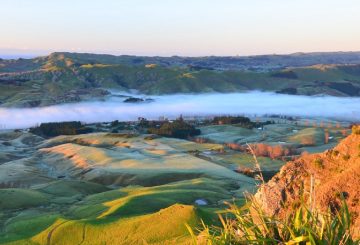Bạn có biết rằng thứ Sáu là Ngày Giấc ngủ Thế giới? Sealy NZ một lần nữa điều tra xem người New Zealand (Kiwi) đang ngủ như thế nào. Nghiên cứu gần đây cho thấy 90% người Kiwi tin rằng giấc ngủ tốt hơn sẽ cải thiện cuộc sống cá nhân của họ.
Khảo sát giấc ngủ toàn cầu của Sealy, nghiên cứu thói quen ngủ của hơn 20.000 người trên toàn thế giới, được thực hiện tại New Zealand với sự giúp đỡ của Chuyên gia Giấc ngủ Tiến sĩ Kimberly Falconer. Mục đích là để hiểu rõ hơn về thói quen ngủ của Kiwi và tìm cách cải thiện chất lượng giấc ngủ.
Nghiên cứu cho thấy điều quan trọng là tập trung vào “hiệu quả giấc ngủ” hơn là “thời gian ngủ”. Mặc dù hơn một nửa (55%) người Kiwi ngủ được khuyến nghị từ bảy đến tám giờ mỗi đêm, nhưng 60% thức dậy với cảm giác mệt mỏi ít nhất năm ngày một tuần. Đáng báo động, cứ 10 Kiwi thì có một người không bao giờ thức dậy với cảm giác sảng khoái. Con số này tăng lên một trong bốn đối với những người làm việc thay đổi ca.
Thói quen ngủ của kiwi dường như ảnh hưởng đến chất lượng giấc ngủ của họ nhiều hơn một số đối tác toàn cầu. Trong tất cả các quốc gia được khảo sát, người New Zealand là người tiêu thụ đồ uống chứa caffein cao nhất, với 93% trong số chúng ta uống ít nhất một thức uống chứa caffein mỗi ngày. Một trong chín người thậm chí tiêu thụ đồ uống chứa caffein ngay trước khi đi ngủ.
Việc sử dụng thiết bị trước khi đi ngủ cũng cao hơn ở New Zealand so với mức trung bình toàn cầu (77%), với 83% người Kiwi xem TV hoặc sử dụng thiết bị điện tử để giải trí trước khi đi ngủ. Chỉ có Malaysia có tỷ lệ cao hơn. Kiwi cũng có nhiều khả năng sử dụng thiết bị truyền thông xã hội hoặc nhắn tin trước khi đi ngủ hơn người Úc.
Điều thú vị là, ai đó càng thường xuyên ngủ gần điện thoại của họ, họ càng ít có khả năng thức dậy với cảm giác sảng khoái. Điều này đáng lo ngại, vì 65% người New Zealand giữ điện thoại di động gần giường trong khi họ ngủ. Con số này tăng lên 87% đối với những người dưới 25 tuổi.
Chủ đề của Ngày Giấc ngủ Thế giới 2024 là “Công bằng giấc ngủ cho sức khỏe toàn cầu”. Thật không may, phụ nữ dường như gặp bất lợi. Họ có khả năng gặp khó khăn khi ngủ và khó ngủ hơn 58%. Nghiên cứu cũng chỉ ra rằng phụ nữ có nhiều khả năng bị ảnh hưởng bởi tình trạng thiếu ngủ hơn nam giới.
Nói một cách nhẹ nhàng hơn, mặc dù thời tiết thường ấm hơn ở Úc, người New Zealand có nhiều khả năng ngủ khỏa thân hơn. Một phần tư nam giới Kiwi cho biết ngủ khỏa thân, so với 12% phụ nữ Kiwi.






























































